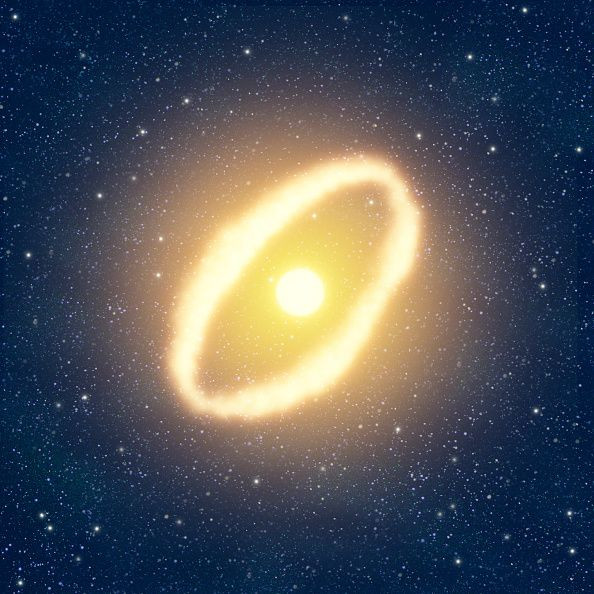First-Ever Black Hole Image: Why It's Such A Big Deal [PHOTO]
The Event Horizon Telescope (EHT) team has released the first-ever image of a black hole and its shadow.
According to Vox, directly imaging a black hole has been impossible since they are either too small, too far away or both. However, people and telescopes from all over the world worked together to make history and capture a supermassive black hole in the center of Messier 87 (M87) in an image.
Located about 55 million light-years away from Earth, the black hole has a mass 6.5 billion times that of our Sun. Capturing the black hole in an image was likened to taking a picture of a quarter of Los Angeles while standing in Washington, DC.
It's not a hot doughnut or the Eye of Sauron.
— Curiosity Rover (@MarsCuriosity) April 10, 2019
This is the first image ever of a black hole.
Supermassive congratulations to the whole @ehtelescope team. What can be accomplished by people and telescopes around the world working together is truly awesome. https://t.co/QYgEsvccXc pic.twitter.com/IqE4h4OXTR
"We have taken the first picture of a black hole," EHT project director Sheperd S. Doeleman of the Center for Astrophysics | Harvard & Smithsonian, said in a statement. "This is an extraordinary scientific feat accomplished by a team of more than 200 researchers."
While the actual image may not seem that impressive, this is mankind's first glimpse of a black hole, which is an extremely dense object from which no matter can escape, even light. Surrounding a black hole is a space called "event horizon, where anything that comes within gets consumed due to the black hole's gravity.
Normally, a black hole would not even be visible in an image, but we can view it due to the "hot disk of material" encircling it.
To obtain the image of the black hole and its shadow, eight ground-based radio telescopes located in different parts of the globe operated together and acted like one giant telescope the size of Earth.
Dimitrios Psaltis called the image “the eureka place. I’m sure many other times in human history, people saw something for the first time ... and what you see, you cannot unsee. This is it for the rest of humanity, for the rest of human history,” Vox reported.
Paul Hertz, director of the astrophysics division at NASA Headquarters in Washington, praised the EHT team in a statement, saying that this was an "amazing accomplishment."
"Years ago, we thought we would have to build a very large space telescope to image a black hole," he said. "By getting radio telescopes around the world to work in concert like one instrument, the EHT team achieved this, decades ahead of time."
EHT, along with NASA's Chandra X-ray Observatory, Nuclear Spectroscopic Telescope Array (NuSTAR) and Neil Gehrels Swift Observatory space telescope missions, all directed their lenses at the M87 black hole in April 2017. NASA's data was not directly used in the image, but their X-ray observations provided more insight into M87's jet.
"X-rays help us connect what's happening to the particles near the event horizon with what we can measure with our telescopes," Joey Neilsen, an astronomer at Villanova University in Pennsylvania, who led the Chandra and NuSTAR analysis on behalf of the EHT's Multiwavelength Working Group, said in a statement.

© Copyright IBTimes 2025. All rights reserved.





















